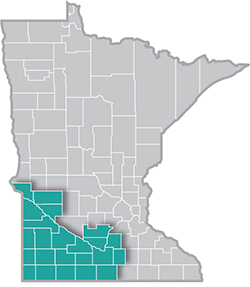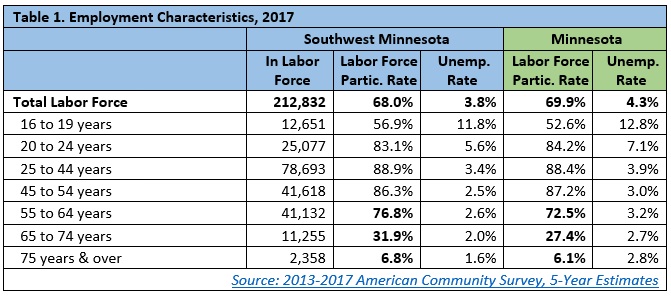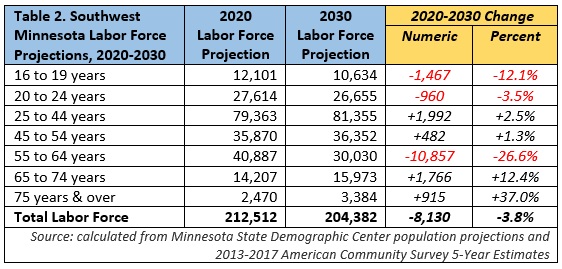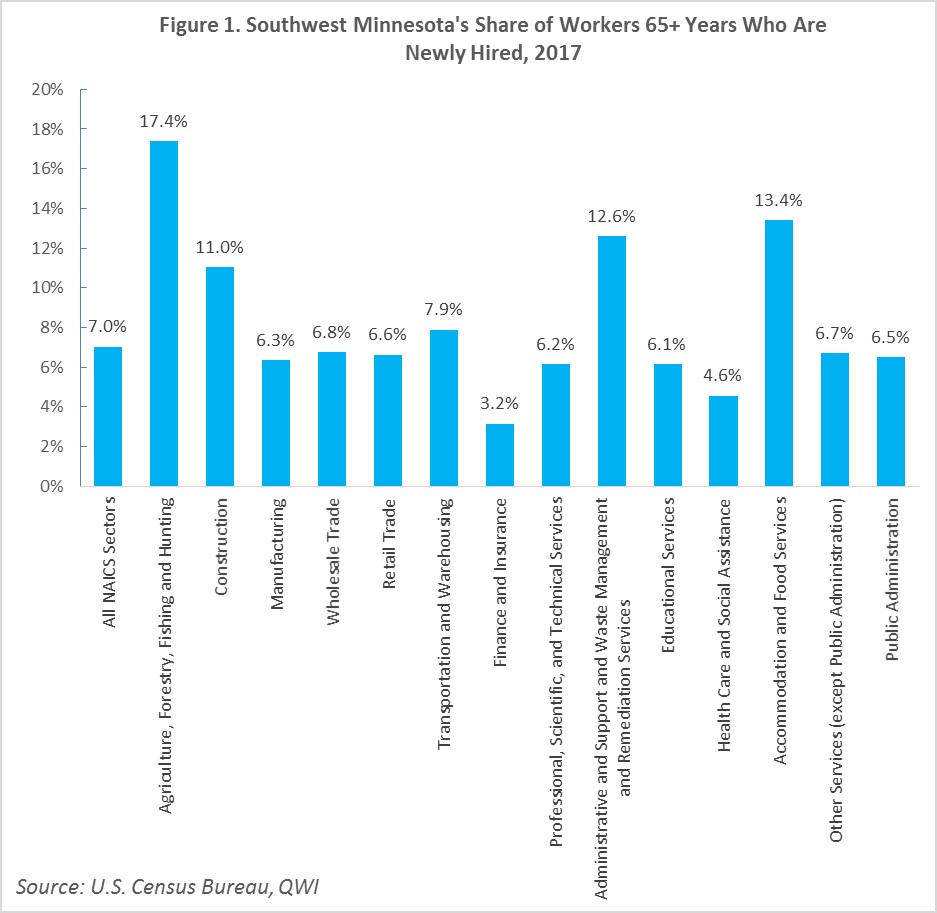 Southwest Minnesota is a national leader in agricultural production, and renewable energy.
Southwest Minnesota is a national leader in agricultural production, and renewable energy.
The region's thriving manufacturing sector includes food processing, machinery, printing, metal products, and computers and electronic products.
Want the freshest data delivered by email? Subscribe to our regional newsletters.
6/20/2019 3:00:00 PM
Luke Greiner
Southwest Minnesota, like the rest of the state, is in the midst of a significant population shift as baby boomers get older and jump up to the next higher age brackets. The most recent estimates from the U.S. Census Bureau show that those age 55 and over make up almost one-third (32.3 percent) of the total population in the region, an increase of 24.1 percent from 2000. With this aging of the population, there is a subsequent impact on the labor force. Currently, workers 55 and older make up 25.7 percent of the labor force, but will they become more engaged in the labor force than the current norms?
The rate of labor force participation falls sharply for people beyond age 64. Roughly 77 percent of workers between 55 and 64 are in the labor force, but less than a third of 65- to 74-year-olds remain in the labor force, and less than 7 percent of people over 75 years are in the labor force. However, the region has a higher participation rate for older workers than other parts of the state (Table 1).

Despite the projected increase of the oldest workers, many will exit the labor force entirely. Without a bulging population of younger workers to replace them, Southwest Minnesota is expected to have 8,100 fewer workers by 2030. Essentially, this means more people will be in the oldest age group, but unless their labor force participation rates go upward rapidly, there won’t be enough new workers to replace the retirees (Table 2).

Three different scenarios can contribute to an uptick in the percentages found in Figure 1:

It’s certainly the case that some workers who have the means to retire simply won’t for their own self-fulfillment, but the data suggest that the main driving factor of why most workers continue working in their golden years is the financial ability or inability to retire. Strategies and programs that aim to target this experienced pool of labor should keep in mind the motivation of older workers. How job opportunities appeal to retirees and/or older workers might depend mainly on their past wages.
For further discussion of the aging population and workforce in Southwest Minnesota, check out the full article in the March issue of Minnesota Employment Review.
Contact Luke Greiner at 320-308-5378 or Mark Schultz.